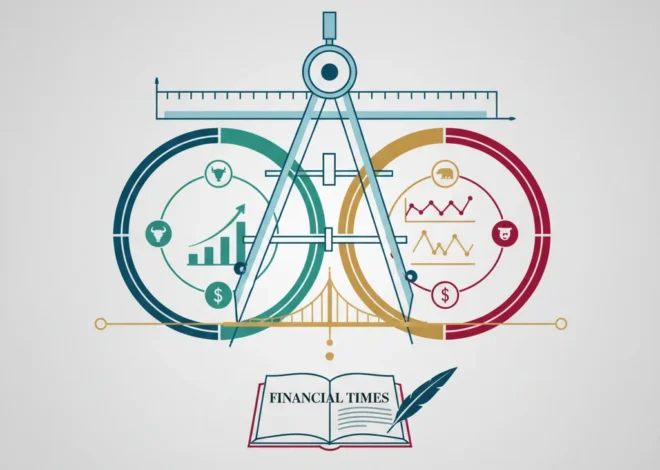
Blackstone’s Big Bet: Why the Titan of Finance is Eyeing the Humble Self-Storage Unit
In the grand theater of global finance, where multi-billion dollar deals and complex derivatives often steal the spotlight, it’s easy to overlook the mundane. Yet, sometimes the most compelling investment stories are found not in gleaming skyscrapers, but in rows of simple, corrugated metal doors. News that private equity behemoth Blackstone is circling Big Yellow Group, a leading UK self-storage operator, has sent ripples through the investment community. This isn’t just about one company buying another; it’s a powerful signal about the state of the economy, the future of real estate, and where smart money is flowing in turbulent times.
The potential bid, as reported by the Financial Times, highlights a fascinating intersection of macroeconomic trends and strategic asset acquisition. While the broader property market grapples with the headwinds of high interest rates and shifting work patterns, the self-storage sector is emerging as a beacon of resilience. To understand why Blackstone is looking for the bright side in a Big Yellow box, we need to unpack the unique economics of storage and the strategic thinking of one of the world’s most formidable investors.
The Players on the Board: A Titan and a Specialist
On one side, you have Blackstone, a name synonymous with private equity and a global investment powerhouse with over $1 trillion in assets under management. Blackstone isn’t just a passive investor; it’s an active operator known for identifying undervalued or resilient sectors, taking companies private, optimizing their operations, and aiming for significant returns. Their interest in any sector is a major indicator of perceived long-term value.
On the other side is Big Yellow Group, a UK-based Real Estate Investment Trust (REIT) and a dominant force in the self-storage market. With its distinctive bright yellow branding, the company operates over 100 facilities, primarily in high-density urban areas. As a publicly traded company on the stock market, its performance is transparent, but also subject to the whims of public market sentiment, which has seen its share price dip amid broader economic uncertainty.
Why Self-Storage? The All-Weather Asset Class
At first glance, self-storage might seem unexciting. But its financial characteristics make it incredibly attractive, especially in the current economic climate. The industry’s strength is built on a foundation of consistent demand driven by life’s transitions—what the industry calls the “4 Ds”: Death, Divorce, Dislocation, and Downsizing.
These drivers make the sector remarkably “defensive.” While demand for office space can plummet in a recession and retail can be upended by e-commerce, people always need a place to store their belongings during major life events. This creates a stable, recurring revenue stream. The demand for self-storage is much more closely correlated with GDP growth and housing market activity than with volatile market sentiment (source).
Here’s a breakdown of the key factors making self-storage a prime target for institutional investing:
| Factor | Description & Impact on Investing |
|---|---|
| Resilient Demand Drivers | Demand is tied to life events (moving, downsizing, starting a business) that occur in both good and bad economic times, providing a stable customer base. |
| Pricing Power | Short-term leases (typically monthly) allow operators like Big Yellow to adjust rents quickly in response to inflation or changing demand, protecting margins. |
| Low Operating Costs | Facilities have low capital expenditure requirements and minimal on-site staffing, leading to high operating margins compared to other real estate sectors. |
| Fragmented Market | While brands like Big Yellow are prominent, the market still has many smaller, independent operators, offering opportunities for consolidation and economies of scale. |
| Urbanization & Smaller Homes | The long-term trend of people moving to cities and living in smaller apartments and homes creates a structural need for external storage space. |
This unique combination of factors makes the sector a powerful hedge against inflation and a source of steady cash flow, two things that are highly prized in the world of finance today. For an investor like Blackstone, this isn’t just about buying property; it’s about buying a highly efficient and resilient operating business.
Beyond the Tweets: Analyzing the Financial Fallout of Elon Musk's 8M Executive Settlement
The Anatomy of a “Take-Private” Deal
If Blackstone proceeds, it would likely be a “take-private” transaction. This means the private equity firm would buy all outstanding shares of Big Yellow, delisting it from the stock market. Why do this?
- Escape Public Market Scrutiny: As a private company, management can focus on long-term strategy without the pressure of quarterly earnings reports and daily stock price fluctuations. This is crucial for making significant operational improvements or capital investments that may not pay off immediately.
- Access to Capital: Blackstone has vast pools of capital (“dry powder”) ready to deploy. It can fund expansion, upgrade facilities with new financial technology, and execute a growth strategy more aggressively than a public company might be able to.
- Operational Expertise: Blackstone doesn’t just provide money. It brings a team of operational experts who can help streamline the business, optimize pricing through data analytics, and improve efficiency, ultimately boosting the company’s value.
- Valuation Arbitrage: The core of the strategy is believing the company’s intrinsic value is higher than its current stock market valuation. By taking it private, improving it, and potentially re-listing it or selling it years later, Blackstone aims to capture that value gap.
This type of deal is a masterclass in modern finance and economics, blending strategic business operations with sophisticated financial engineering. It represents a conviction that private ownership can unlock value that the public markets are currently overlooking.
The Multi-Billion Pound Recall: How the Car Finance Scandal is Reshaping UK Banking and Investing
Broader Implications for the Economy and Investing
The potential Blackstone-Big Yellow deal is more than an isolated event; it’s a barometer for several key trends in the global economy.
First, it underscores the ongoing shift in the commercial real estate landscape. While sectors like office and traditional retail face existential challenges, “alternative” real estate classes like self-storage, data centers, and logistics are now seen as the new core assets for institutional portfolios. According to a report by Cushman & Wakefield, investor interest in the self-storage sector remains robust due to its strong fundamentals.
Second, it signals that private equity giants are ready to deploy their massive cash reserves. After a period of relative quiet due to high interest rates and valuation uncertainty, this move suggests that firms like Blackstone see a window of opportunity to acquire high-quality assets at more reasonable prices. This could herald a new wave of M&A activity, impacting everything from banking to trading volumes on the stock market.
Finally, the integration of technology is a key, if subtle, part of this story. Modern self-storage isn’t just about locks and keys. The sector is increasingly leveraging financial technology (fintech) for dynamic pricing models, automated online booking and payment systems, and sophisticated security. There’s even theoretical discussion in niche finance circles about the future of real estate tokenization using blockchain technology to fractionalize ownership of large property portfolios, though this remains a nascent concept.
FTSE 100's Ascent: Decoding the Dance Between a Rising Index and a Falling Pound
What This Means for You
For different stakeholders, this potential deal offers varied takeaways:
| Audience | Key Takeaway |
|---|---|
| Individual Investors | Highlights the importance of looking beyond glamorous tech stocks to find resilient, cash-generative businesses. It’s a reminder that “boring” can be beautiful in an investment portfolio. |
| Finance Professionals | A clear signal of where institutional capital is flowing in the real estate sector. The focus is on operational assets with pricing power that can withstand inflationary pressures. |
| Business Leaders | Demonstrates the strategic value of building a business model with a defensive moat and recurring revenue, making it attractive for acquisition even in a tough economic environment. |
Ultimately, Blackstone’s potential bid for Big Yellow is a story of seeing immense value where others see uncertainty. It’s a testament to the enduring power of a simple business model that caters to fundamental human needs. In a complex world of high-stakes finance and volatile economics, the humble self-storage unit stands as a surprisingly robust and strategic asset, and the titans of investing have clearly taken notice.


